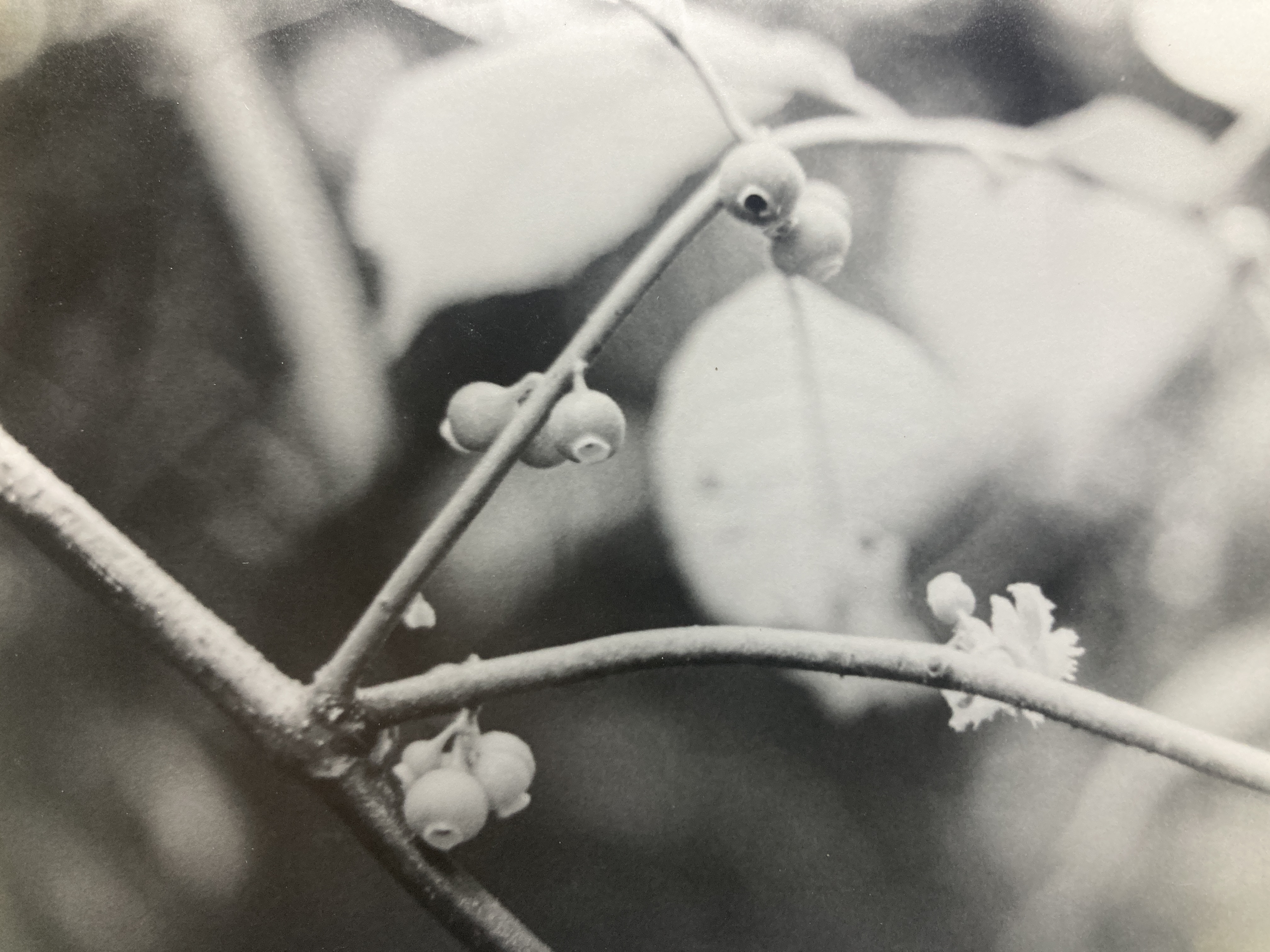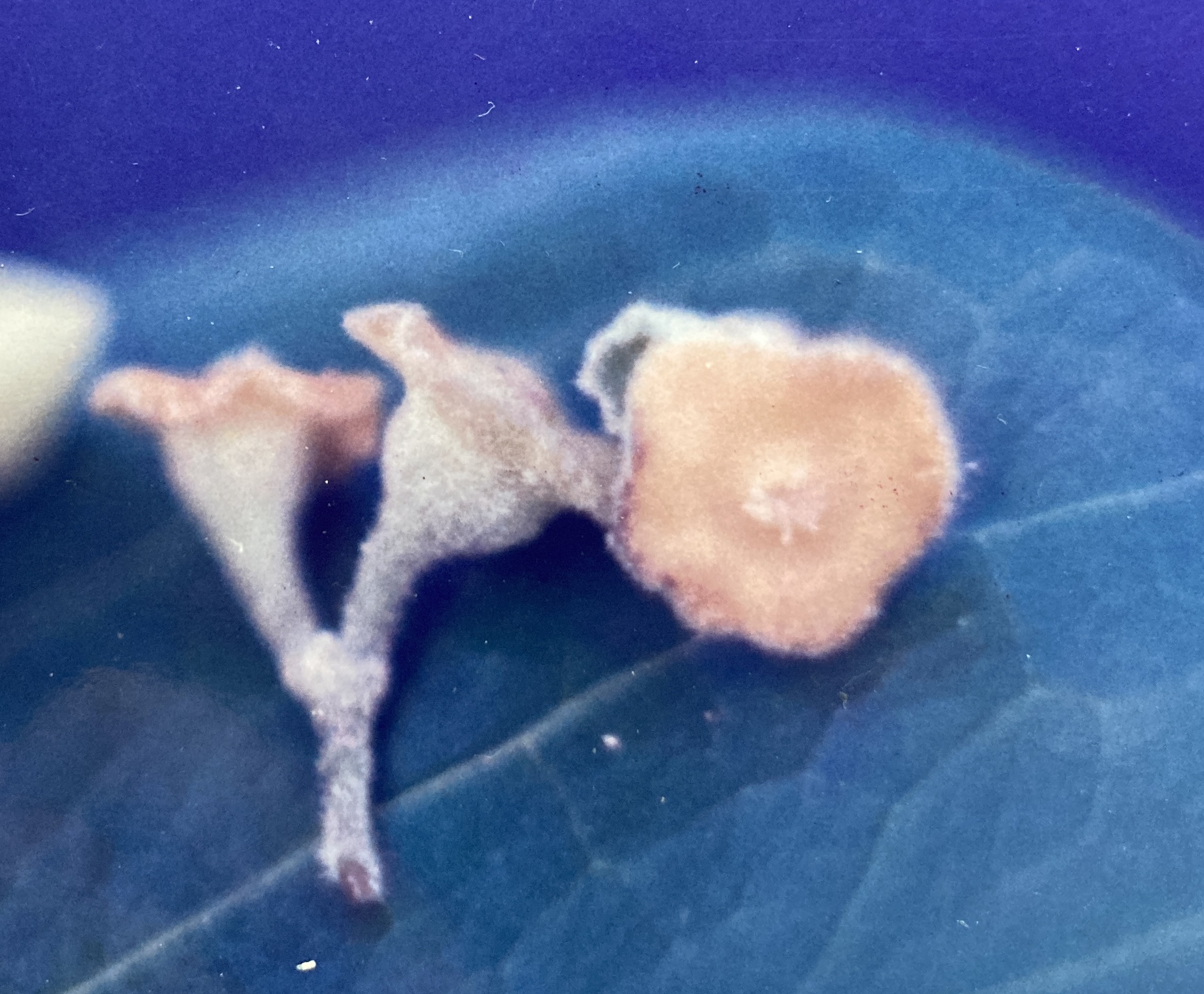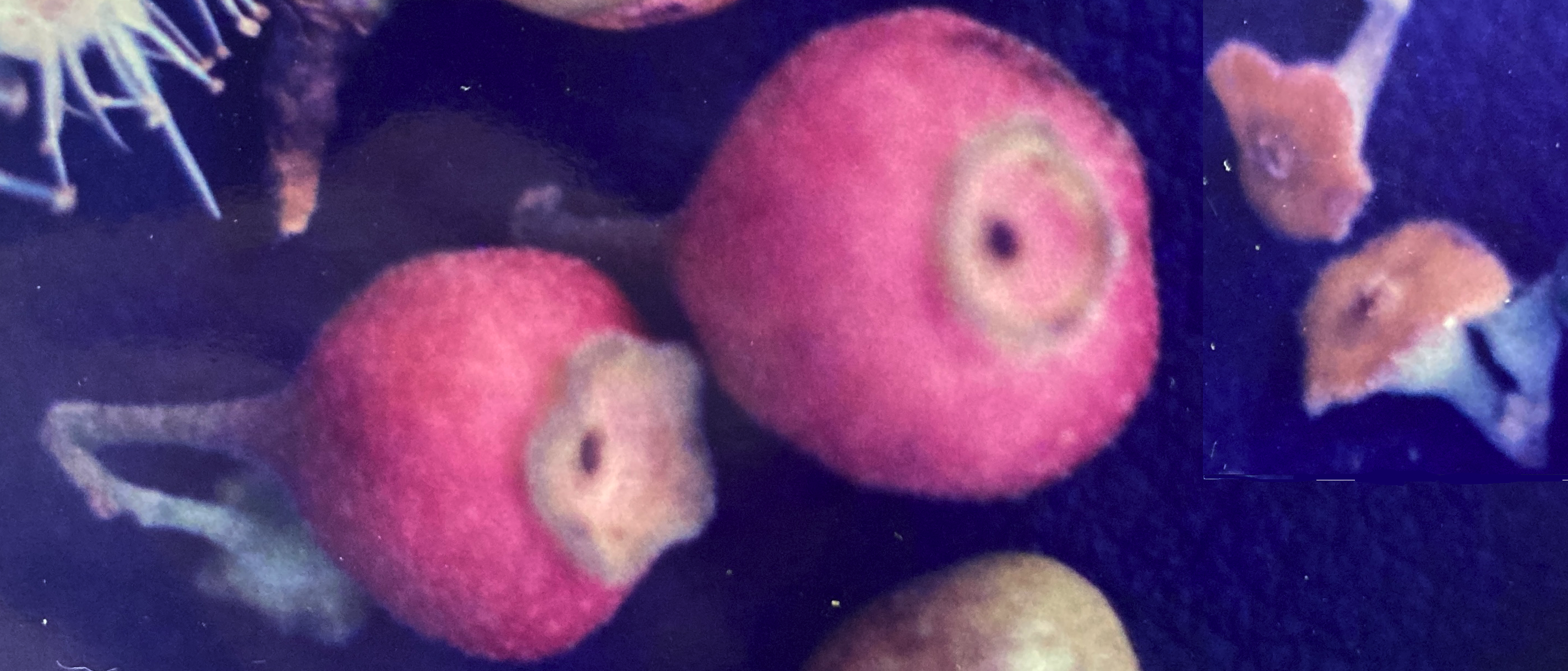Siparuna gesnerioides (Kunth) A.DC.
Monimaiceae
LIMONCILLO
Occasional evergreen treelet or shrub (2-4 m) found growing along well-insolated trail and road sides. The common name “Limoncillo” derives from the strong fragrance emitted by this plant’s fruits – a smell that is distinctly sweet and pleasantly lemony.
Description: Limoncillo has a thin, green stem (3 cm) with long, drooping branches. The plant is only thinly covered with foliage and, due to its spindly growth habit, often resembles a small vine. Twigs and leaves are thickly covered with a minute, white or golden pubescence – so much so that the foliage is velvety in texture. The elliptical blades are simple, opposite, and variable in size, ranging from 15-21 cm in length and 5-8 cm in width. Most develop pronounced drip-tips, long petioles (1-3 cm) and slightly serrate (or crenate) margins. Tree growth and foliage production typically occur in greatest profusion in September and October – just before the start of the annual fertility cycle.
Flowers (0.5 cm) grow on small axillar racemes and they may appear amid the current foliage or along the bare portions of the stems. Each yellow blossom is quite simple, being composed of a five-lobed, flat, and disk-like corolla (5 mm) with a central pistil and an inferior green ovary and pedestal. Lasting for six months, the flowering season is extended, beginning punctually in late October and ending in late April.
Fruits are ovoid, fig-shaped pink berries (1.5 cm) that smell very pungently of sweet lemon. While immature, their most prominent feature is the persistent, star-shaped flower calyx that is retained distally. Upon ripening, the fruit opens as the fleshy wall tears along irregular lines and then flattens – completely exposing the interior surface. Lodged on this pink platform are the small (3 mm), glossy black seeds. Half covered by a deep red aril, the seeds remain in place until dispersed. Fruits typically grow in small clusters, close to the main stem of the plant along which leaves are no longer present. The pink orbs accumulate during the extended flowering season and begin harvesting in April, opening one by one until the supply is exhausted in July.
Similar Species: Limoncillo is fertile for ten months of the year and, as long as its unique flowers or fruits are visible, this species is easily identified. During the sterile months August and September, Limoncillo’s low stature, velvety leaves and secondary growth habit should enable its rapid recognition. No other treelet present in Manuel Antonio strongly resembles Limoncillo.
Natural History: Limoncillo flowers are pollinated by bees and other insects. Its seeds are dispersed by small birds. The latter are made more visible to foraging avifauna thanks to the strategic location of the fruits along the bare, uncluttered portions of the main stems.
Distribution: In Manuel Antonio National Park (MANP), this is an early-secondary growth species typical of disturbed sites such as trailsides. Limoncillo is also found growing within the forest, often in light gaps. This species ranges from southern Mexico to Venezuela.
Images: Stem Flower Fruit&Flower Fruit&Flower2 Fruit&Seed



